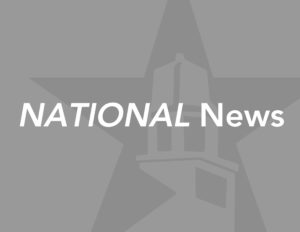In the next few weeks, the United States will commemorate the 54th anniversary of the assassination of John F. Kennedy, our nation’s 35th president. While the death happened a lifetime ago for many Americans, it still stands out in our national consciousness as the most impactful presidential death—as well as the most mysterious. Now, since the event has been brought back into the national spotlight by our current Commander-In-Chief, it is worth revisiting the controversy that surrounds it.
 Here are the things we do know: On November 22nd, 1963, the President was riding in his motorcade through the streets of Dallas, Texas, when he rolled into Dealey Plaza. It was here that Lee Harvey Oswald, high atop one of the nearby buildings, shot the President in the head with a sniper rifle. Later that day Oswald also shot a city police officer, which further focused the manhunt on him. He was eventually found in a movie theater and arrested. Two days later, on November 24th, Oswald was killed by the owner of a local nightclub, Jack Ruby, on live television.
Here are the things we do know: On November 22nd, 1963, the President was riding in his motorcade through the streets of Dallas, Texas, when he rolled into Dealey Plaza. It was here that Lee Harvey Oswald, high atop one of the nearby buildings, shot the President in the head with a sniper rifle. Later that day Oswald also shot a city police officer, which further focused the manhunt on him. He was eventually found in a movie theater and arrested. Two days later, on November 24th, Oswald was killed by the owner of a local nightclub, Jack Ruby, on live television.
But while we know these things for certain, it is the things we don’t know about Kennedy’s death that have ignited controversy, both then and now. Questions have arisen as to why Oswald might have wanted to kill the President, what kind of connections he might have had to the Soviet Union, and whether or not the very government that Kennedy led wanted him (or Mr. Oswald) dead. Such skepticism arises from ideas like the “magic bullet” theory, which centers around the argument that the governor of Texas at the time, John B. Connally Jr., was also shot in the car with Kennedy by the same bullet. Proponents of this theory have advocated the possibility of a second shooter and cast doubt on governmental claims. Other theories have ranged from communist conspiracies to government cover-ups, so many hoped that the classified government files on the event, ordered to be released by President Donald Trump on November 3rd of this year, would clear the confusion.
Yet a thorough reading of the files, dubbed the “JFK Files,” leaves much to be desired. They reveal some information about the situation, but overall provide more questions than answers. Only some of the documents actually pertain to the assassination itself, while others simply detail the United States government’s paranoid struggle against communism. What the files do mention about the Kennedy assassination is vague at best. They describe a conversation in which Oswald called both the Soviet and Cuban embassies in Mexico in an attempt to gain a visa to reach his wife in the Soviet Union. Other files record an interview with a Cuban intelligence officer, in which he simply said that Oswald was a “good shot.” Dispersed among these puzzling records are still more files which claim that the Soviet government called the assassination a “well-organized conspiracy,” and a call to the FBI from November 23rd, 1963 in which someone claimed to be out to kill Oswald.
The attempts to demystify this admittedly murky and divisive event by the U.S. government seems to have failed, and questions still remain as to how ethical the acquisition of this information actually was. One of the files states that the number of phone taps near the Mexican embassies were “limited only by the availability of a listening post nearby,” meaning a potentially limitless number of phones could have been tapped by the CIA. In an age when it is easier than ever to spy on ordinary citizens, and during which our government openly admits to a policy of relentless espionage, such a revelation is only likely to add ambiguity rather than clarity to our national consciousness.
